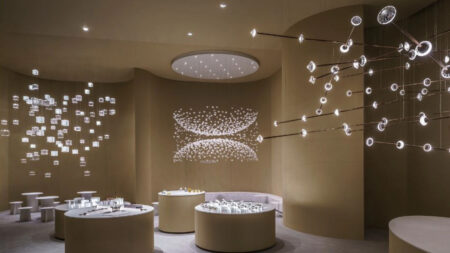“Optimism is a good thing, but never lower your guard,” Annalisa Rosso, editorial director Salone del Mobile, tells all dedicated women architects and designers diligently crafting their hearts out despite being saddled by continued chauvinism and criticism.
To pay an ode to these strong women and to commemorate their success in the face of adversity, your beloved home decor magazine ‘Homecrux’ turns ‘Womecrux‘ this women’s day. Womecrux is not an alliteration to the title but a constant journey in the search for women’s murals on the high-rising walls of architecture and design.
Joining us on the journey are Leatrice Eiseman (Pantone Director), Manuela Lucà-Dazio (The Pritzker Architecture Prize Executive Director), Annalisa Rosso, Gabriela Carrillo, and other top women industrial designers, educators, and architects from around the globe.
“I can still remember when I organized an all-female panel discussion during a design event, a few years ago. I was surprised by the participants, more focused on that aspect than on the contents of the discussion,” Rosso tells Homecrux. What the Salone del Mobile editorial director mentions, does not come up as a surprise to me since both design and architecture have always been considered male-dominated fields.
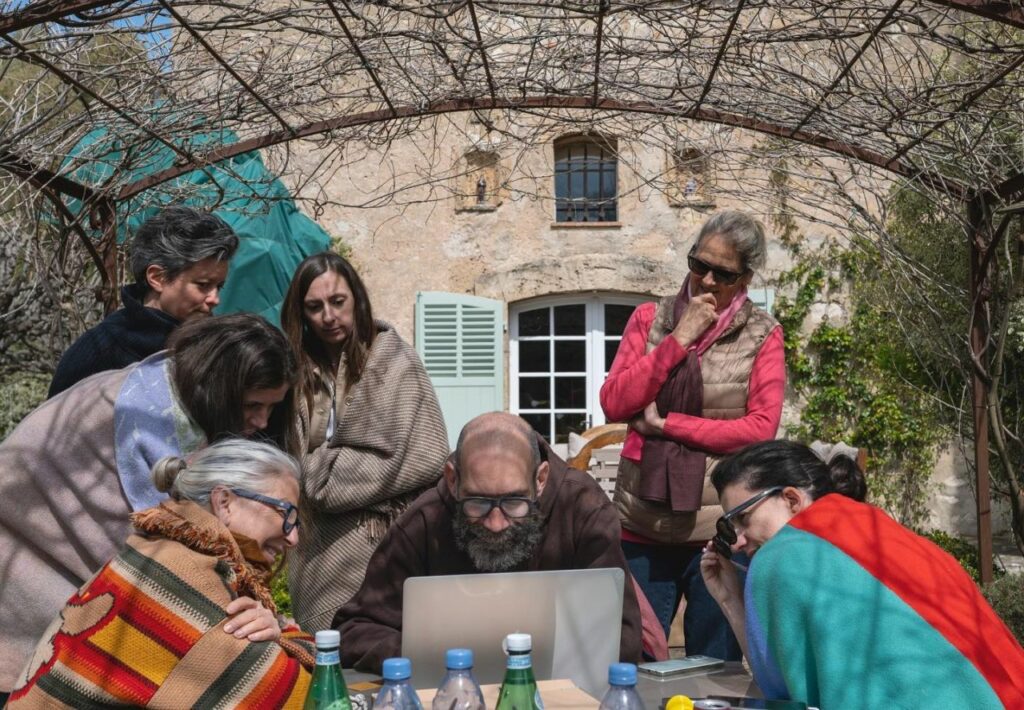
For centuries, women have been structurally held back in so many ways and places that even after multiple waves of feminism, digital awareness, and education, there is just one woman in five top positions at the biggest architecture firms.
The gravity of the situation is such that even Manuela Lucà-Dazio, the Executive Director of the Pritzker Architecture Prize tells us, “It’s a relevant and fundamental topic that needs to be talked about.” Despite Pritzker running for forty-four straight editions, there are just six women who’ve had the privilege to kiss the bronze medallion with Zaha Hadid breaking the ice in 2004.
Today, ‘Homecrux turns Womecrux’ to narrate the stories and struggles of the divas of design, the empresses of architecture, and most importantly every single woman who has dared to dream. Womecrux will also tell you how difficult the terrain has been for women over the past decade and what the future beholds for the ‘female of the species.’
Speaking on this, 2017 Architect of the Year, Gabriela Carrillo believes that the power to bear life makes women naturally and intuitively generous. Sharing her thoughts with us Carrillo states, “I do not believe in a specific role for women, nor in the existence of a day to celebrate them. However, I do believe in the privilege of being born a woman, of being an architect, and of being able to become emotional and responsive through what I do and imagine.”
Being optimistic about the future, Carrillo shares, “I believe in the power of spatial dignity, urban safety, and provocation as a protest against what troubles us. I will raise my voice through my work, which will continue to evolve, be imperfect, and make mistakes, with what I understand to be ethical and from a particular perspective. For me, this means the pleasure of being a woman imagining spaces, making architecture.” Carrillo may have an optimistic approach toward things but numbers speak a different story.
If we peek at the figures; the percentage of women architects and industrial designers is not promising at all. Around 81 percent of industrial designers in the United States are male. The numbers are even worse when compared with the UK, where it stretches to 95 percent.
Elisa Pardini, a former architect at Foster + Partners tells Homecrux, “We are slowly allowing ourselves to be only human beings all collaborating to evolve our society, independently from our gender. Until now, there have been few incredible women that were allowed or managed to express themselves in the work fields, but they have been exceptions, in art and design, and especially in architecture. It has always been a very male-dominated environment.”
What Elisa says does hold water if looked at from a historical perspective. Women architects never got the due for their work and had mostly been shadowed by their male counterparts. There is no better example to understand this than by analyzing the curious case of Architect Marion Mahony Griffin.

In 1911, when the Australian Government launched a competition for the design of a new capital city, Marion Mahony Griffin’s husband sent 16 renderings to the Australian government that was finally approved. However, later it was revealed that Marion Mahony Griffin was the one who had actually blueprinted those designs.
Although Marion distanced herself from the work and let her husband accept the accolades, this instance itself reflects a wider problem. “And that is that we do not remember and celebrate the historic role of women in civic and political leadership in this country,” tells Historian Clare Wright from La Trobe University.
The reason behind Marion Mahony Griffin not taking credit for her work is still unknown but National Capital Authority (NCA) curator Roslyn Hull assumes, “Walter and she felt that if her name was on the design it would trivialize it.”
Moving to the present scenario, despite half of the graduates being females, only 18 percent of licensed practitioners are women in the United States. Moreover, both design and architecture are overwhelmingly white. As per the University of Cincinnati’s Directory of African American Architects, around two percent of licensed architects in the United States are African American. The numbers might be old, but nothing much has changed in the past decade or so.
Speaking of women’s role in architecture and design and how it has changed over the years, Pardini states, “As a new trend, this brings new points of view and fresh responses to input. I find it extremely interesting to be living in this historical period where we can see all those new points of view raising and mixing with the established human responses. It is very enriching for our species.”
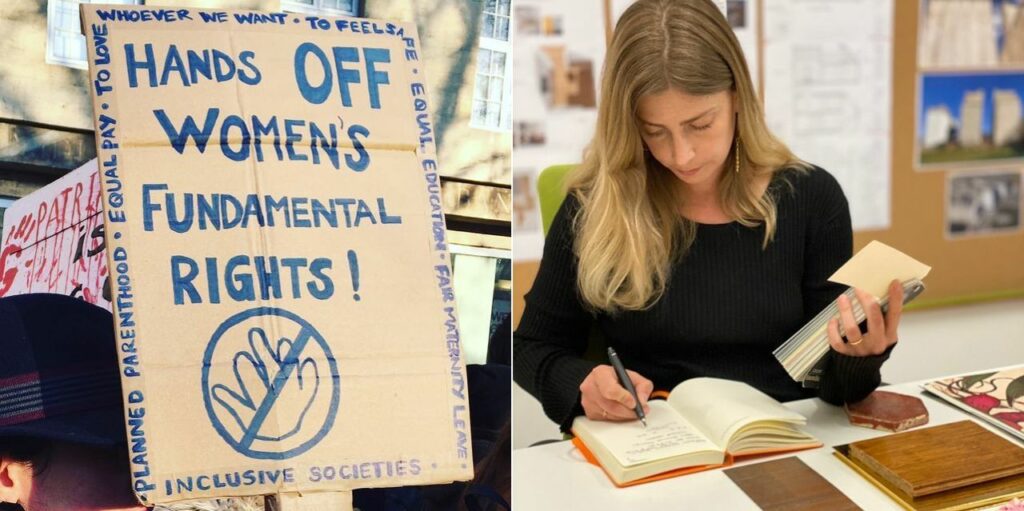
On the brighter side, when the demographics in interior design are considered, the result favors women. In the United States alone, 79 percent of all interior designers are women and so is the trend in other developed and developing nations of the world. Interior design is one of the few careers where historically, the number of women has far exceeded the number of men. It has enabled many women to climb the ladder of success within a given field.
The landscape in interior design was not always as glorious for women. “When the practice of interior design first started, women were not always given the opportunity to become professionals, but eventually it was acknowledged that they had unique qualities in the areas of space planning and color usage,” states Leatrice Eiseman, Pantone director.
“In my own field of color consulting and training, this started as a “masculine” profession, and women had to work even harder to establish their credibility and abilities in those areas. Today it is less of a surprise to see a woman at the helm of design and color design efforts within a variety of industries,” Eiseman adds.
To carry the ‘masculine and feminine’ debate forward is the rhetoric that women are more inclined in doing interiors and men love bracing technical stuff. There are many examples where women have been building skyscrapers and instances where men are designing stilettos. So, that doesn’t look like a problem barring women from building stuff.
Allison Arieff, a former New York Times opinion writer points out, “Irrespective of facts and figures, the debate is more about why fewer women are sticking with the industry, despite completing their degrees in it. Sexism within the ranks of management, the pay gap between genders, and a lack of female role models are some of the prime reasons that are holding them back.”
Despite these hurdles, there have been many pioneers of the women’s architecture and design movement over the years. Louise Blanchard Bethune, Charlotte Perriand, Ray Eames, Zaha Hadid, and Gabriella Crespi are some of the names that achieved success even though they were initially shadowed by their male partners and colleagues. These women architects and designers have not only helped shape the future but also paved way for other women to build their dreams.
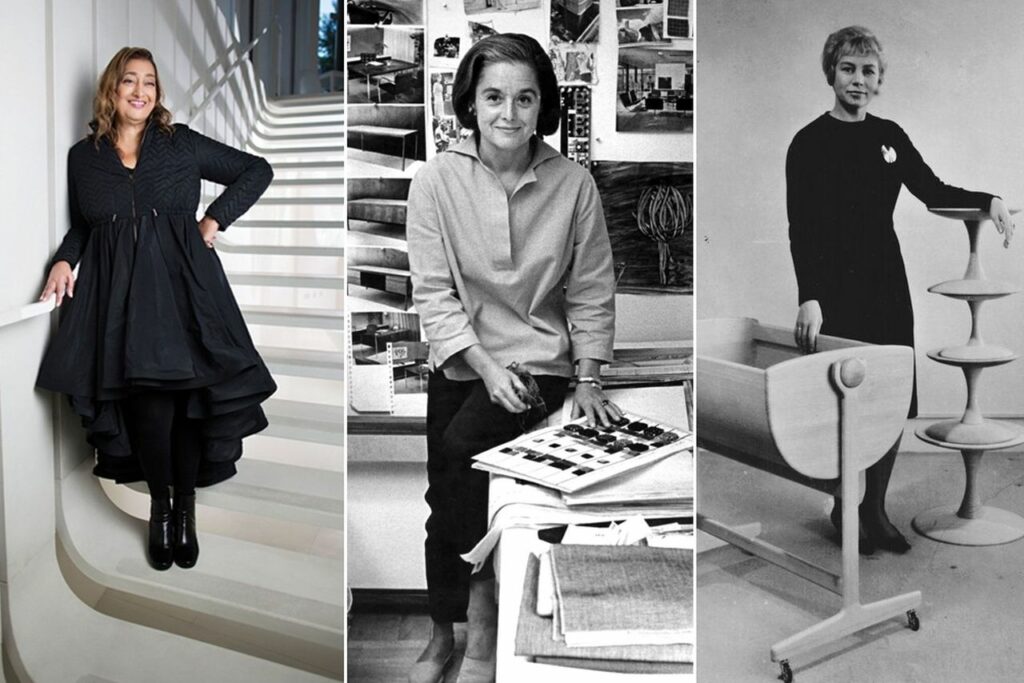
Irrespective of the slight success tasted by a handful of women, the story of women in architecture and design has not been a tale of Prince Charming in search of Cinderella. It’s rather a story of Sojourner Truth, Susan B. Anthony, and Simone de Beauvoir who fought their way out in hope of a bright day and a merrier future for the generation of women to come.
But all the aforementioned belonged to different strata of society and their struggles were different than the ones hailing from the world of design. In feminine design and architecture – past and the present – the protagonists are different and so are their stories. Nourhan Rahhal is one such woman hailing from UAE who used to work as an usher in Art Abu Dhabi. From checking tickets at the entrance to exhibiting her Vee chair at the same museum, her story is that of grit, determination, and diligence.
“In UAE, most factories or workshops are male-dominated. More importantly, women’s role in fabrication and woodworking is still not a very common thing in this part of the world and is also not acknowledged,” Nourhan Rahhal told Homecrux in an exclusive interview. “My goal is to succeed in my long-term plan which is making female woodworkers a new norm in this part of the world and help inspire Arab females in general and young ones in specific, to break out of boxes society has forced on them,” she adds.
But not all women are as lucky as Nourhan to find the constant support and environment from fellow men to design. From torches of freedom to other publicity stunts, women are still being used as a gimmick in marketing campaigns. For the truth to not just go up in smoke, it is important for one to truly celebrate femininity and empowerment in the design landscape. One needs to recognize how crucial the role of women could possibly be.
Award-winning architect and interior designer, Victoria Benatar is optimistic about things and informs us, “In 1958, one percent of registered architects were women. By 1988 that number had risen to four percent and to 13.5 percent by 1999. There has been a significant increase in numbers to date and I firmly believe that the share of women in leadership roles in the profession has continued to grow, albeit at a slow rate.”
Serving as the guest professor at Parsons School for Design, New York; Victoria is also one of the female torchbearers when it comes to taking advice on developing flexible furnishings. Her EXD Double Wall Solution garnered a lot of attention on the internet and opened doors for more women designers in the multifunctional furniture space. “Talent does not have a gender. We both man and woman receive the same education and have the same potential to develop fully as a successful professional practitioner,” Victoria states.
Talking about women’s present role in architecture and design, Salone editorial director Annalisa Rosso said, “Times are changing, and nowadays it happens that our attention is drawn, in a negative way, by all-male gatherings. I like the idea that people are starting to notice that somebody is missing – and I think this is just the beginning: we are ready to be more and more inclusive.”
“And if I am especially glad with a generation of brilliant Italian female designers and journalists, and especially proud to work with Maria Porro, the Salone del Mobile Milano’s first female President, I am still waiting for the same wave regarding the biggest architectural firms worldwide.”
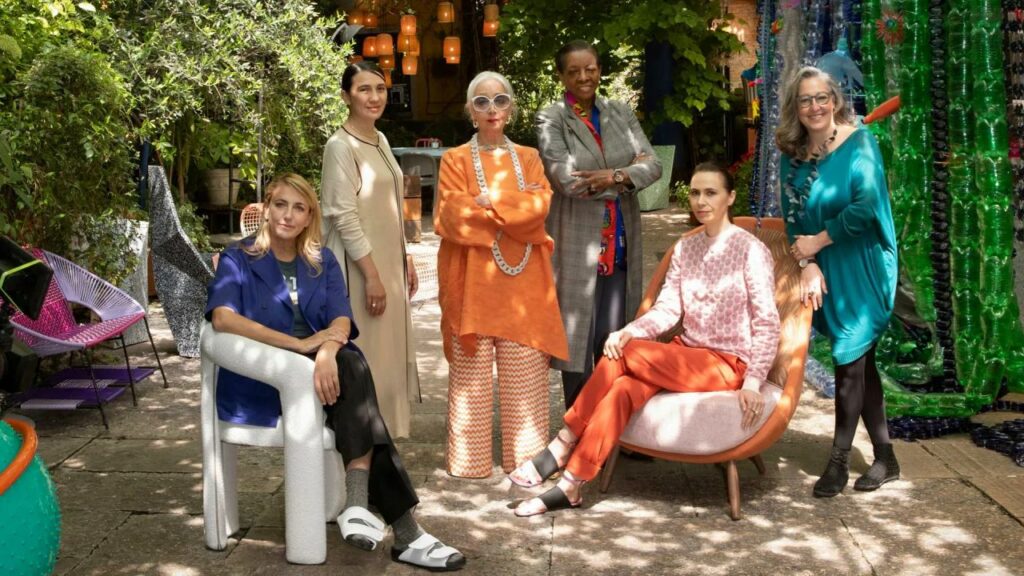
Renowned Indian architect Annkur Khosla has a strong stance on the present context of design and architecture. She states, “Architecture cannot exist without women. Historically, women have been caretakers of society, recognizing their role in understanding contexts and necessities which opens a 360-degree view of possibilities, for creating, for telling stories about architecture, in all aspects of it. Women support in all acts of working as laborers, tile-makers, inlay artists, craftspeople, and guides. Architecture cannot exist without them.”
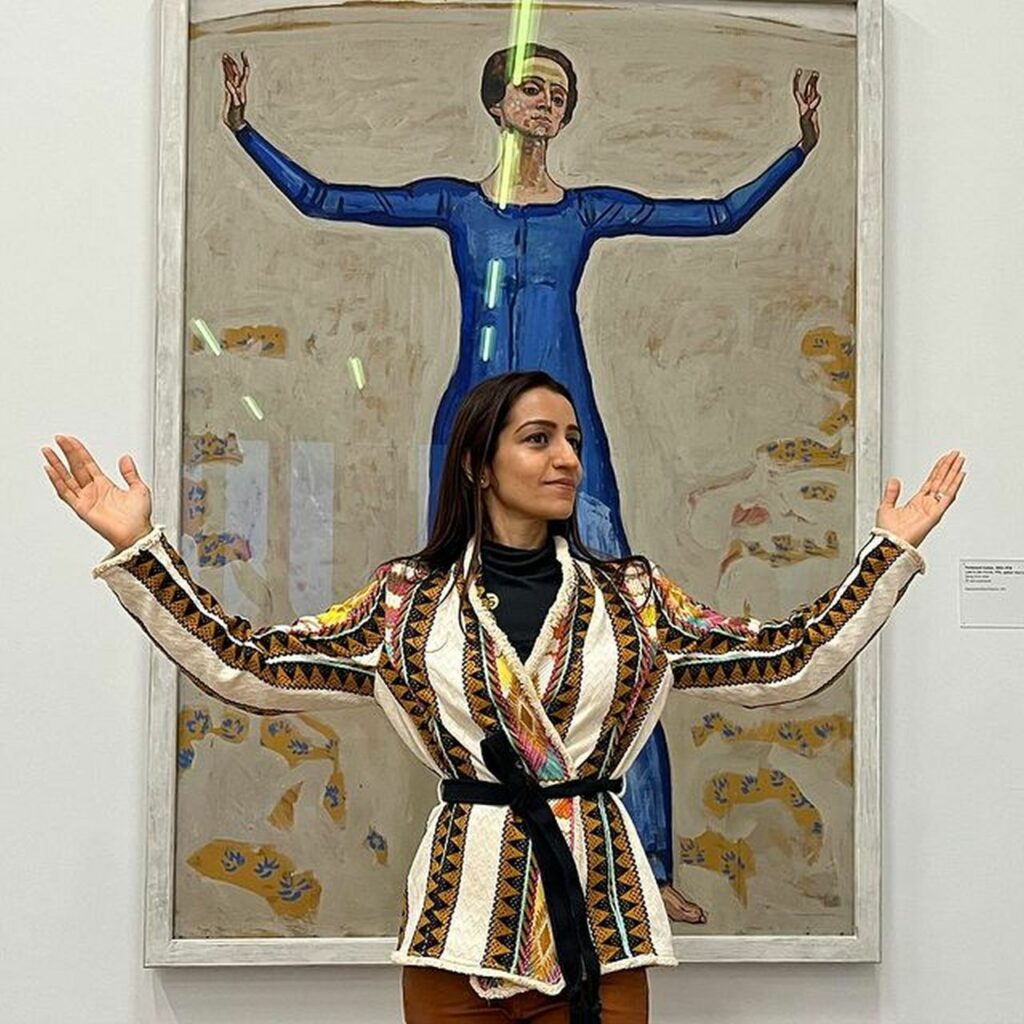
International Women’s Day 2023 is the time (not a day) for us to rejoice, cherish, and celebrate the contribution and success of women and many others who have role modeled the future generations of women to break the barriers to go against the grain and fight for that which is truly theirs. It is also time to introspect and look at what’s right and mend that which is wrong with women’s role in architecture and design.
From pay gaps to casual sexism at work and from lack of representation to ignorance, the problems are plenty and the answers are few. As Annkur mentions, “Women are innately sensitive and have an affinity for design, hence make for good architects.” While Annalisa and other women might be adamant about the missing aspect, I somewhere feel, the mural is not missing but rather broken and the answer lies in not finding the mural but rather fixing it. I personally feel the mural is there, it has always been there, we’ve just not had the gall and gumption to fix it.
The world is full of fabulous women designers and architects, and ‘Homecrux turns Womecrux’ shouldn’t be confused with the story of architects who made it big time but should be read as an ode to the thousands of women designers and architects who dared to dream.
Follow Homecrux on Google News!



